The OnePlus Pad 2 features the brand-new Snapdragon 8 Gen 3 processor, a 12.1-inch display with 144Hz and 3K resolution, plus an exclusive interface that no other tablet offers. And all this at the affordable price of €499.
Design and packaging
The OnePlus Pad 2 retains a design similar to that of its predecessor, with a metal unibody construction that blends well with the OnePlus Nord 4 launched at the same time, which I was able to test a short while ago. The aluminum and anodized frame offers a soft touch and is supposed to be more resistant to scratches, according to OnePlus.
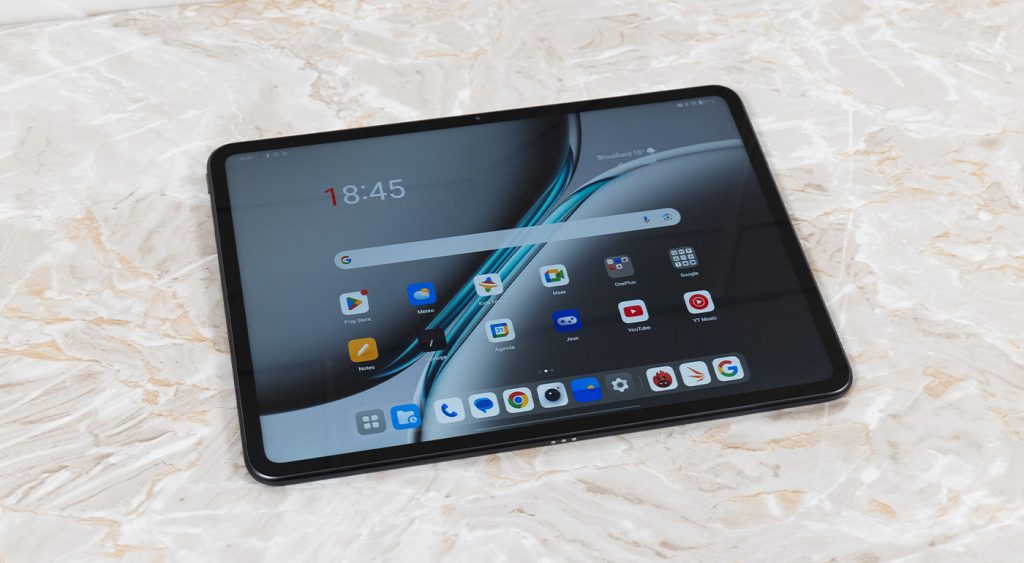
It’s as thin and light as the first model according to the datasheet, with a thickness of 6.49 mm and a weight of 584 g. That’s 30 g more than the previous model, but with the screen size increased from 11.6 to 12.1 inches, this slight weight gain seems reasonable.
The OnePlus Pad 2 is remarkably slim and pleasant to hold, with curved edges and rounded corners that fit perfectly in the palm of the hand. But I confess to regretting the absence of the green finish typical of OnePlus products, as the Pad 2 is only available in “Nimbus Gray”.
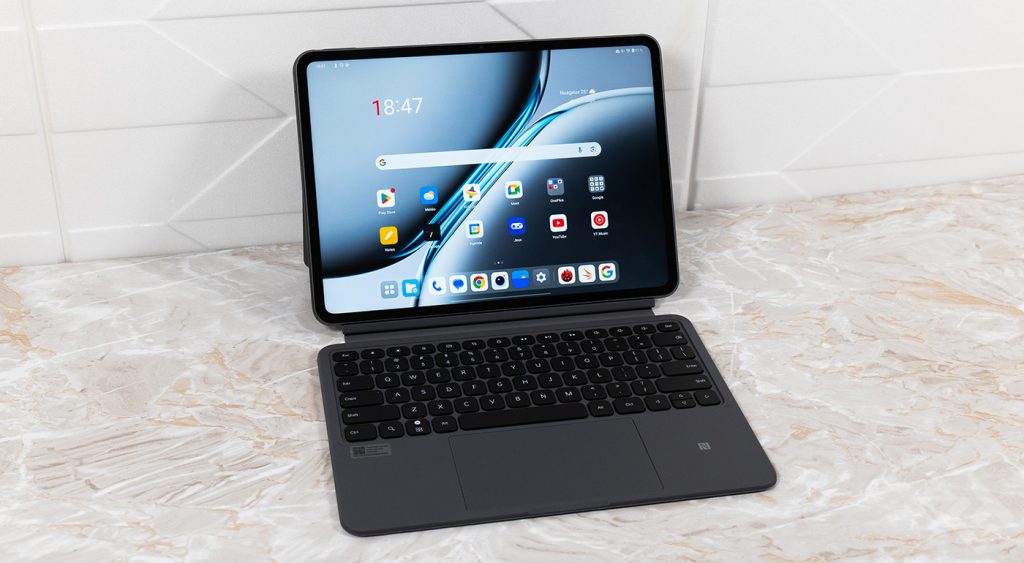
The tablet is compatible with various accessories, including a keyboard case that doubles as a stand, and a OnePlus 2 stylus. These accessories are not included with the tablet, but they are available separately and extend the Pad 2’s functionality. For my part, I only received the keyboard.

I mentioned the frame earlier. It seems appropriate to return to it to reveal what’s inside. The top edge features the volume control button and a microphone, useful for communication.
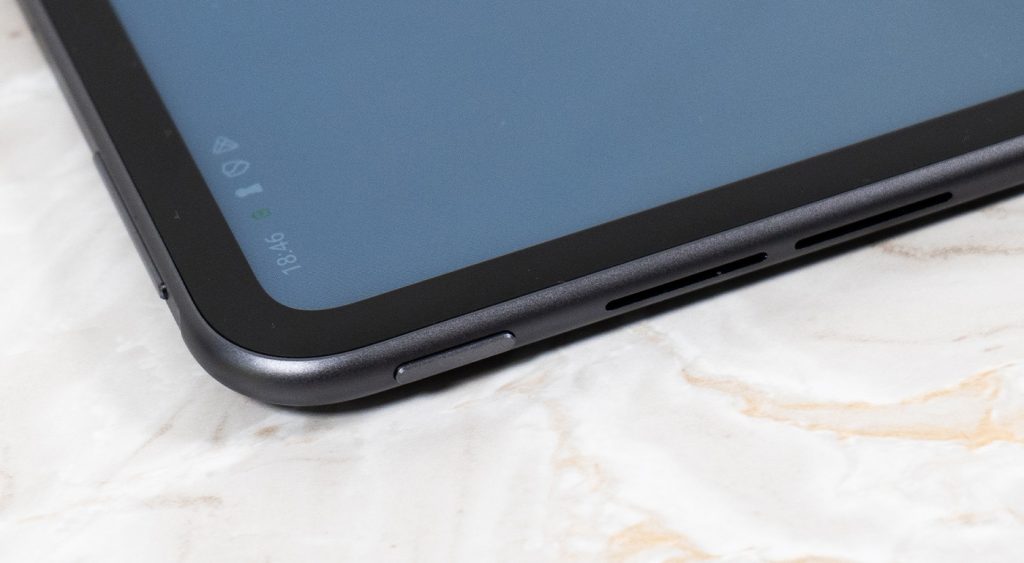
The left and right sides feature speakers. The power button is on the left. Finally, I could make out magnets on the bottom edge, which allow the OnePlus Pad Smart Keybord to be attached to the tablet.
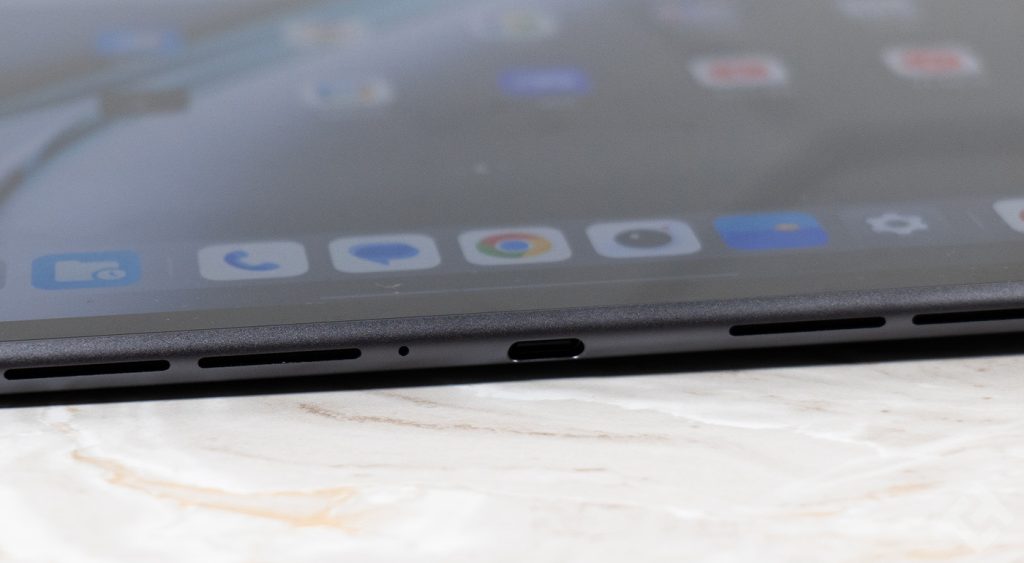
The Smart Keyboard offers a complete typing experience thanks to its large trackpad, transforming the OnePlus Pad into a real alternative to a laptop. I’ll talk more about this in a dedicated section.
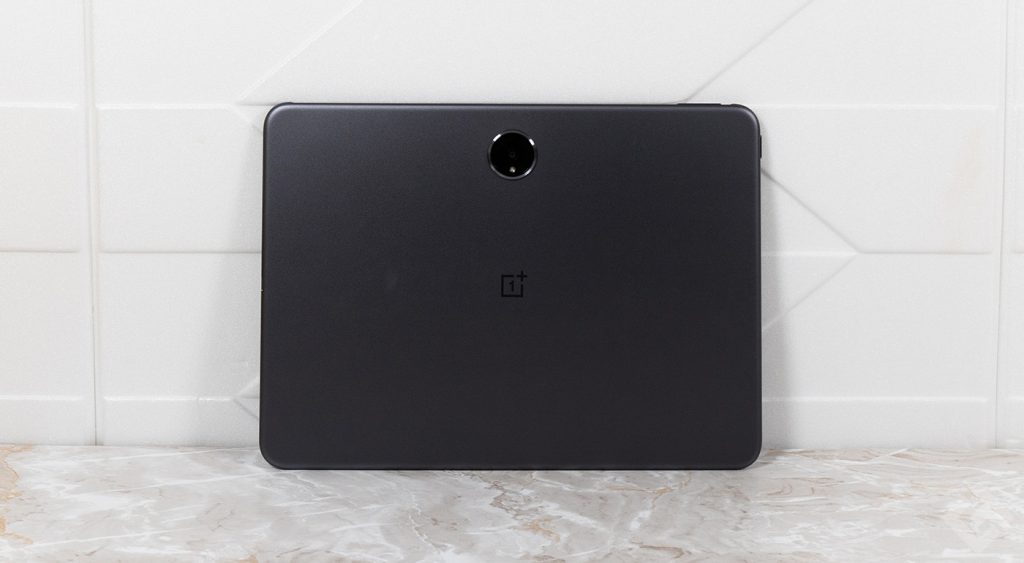
Although the tablet’s screen is incomparable to that of the MatePad Pro 13.2″, it’s still rather pretty at first glance. It’s equipped with a 12.1″ LCD panel, as I mentioned at the start of this section of the test. Naturally, a lens is located on the top edge of the surface.
OnePlus Pad 2 specifications
| Model | OnePlus Pad 2 |
| Operating system | OxygenOS 14.1 |
| Processor | Snapdragon 8 Gen 3 |
| Number of processor cores | 8 cores |
| RAM | 12 GB LPDDR5X |
| RAM frequency | 3686.4 MHz |
| Storage | 256 GB |
| Graphics card | Adreno 750 |
| Resolution | 3000 x 2120 px |
| Pixel density | 303 ppi |
| Diagonal | 12.1 inches |
| Screen frequency | 144 Hz (max) |
| Touch screen | Yes |
| Speakers | 6 speakers |
| Wi-Fi | Wi-Fi 7 |
| Bluetooth | Bluetooth 5.4 |
| Connectivity | 1 USB-C port |
| Webcam | 8 MP |
| Weight | 584 grams |
Performance
–
OnePlus Pad 2 screen
Let’s talk about the screen, because it really is one of the OnePlus Pad 2’s major assets, outperforming most competing tablets, including iPads. At 12.1 inches, this screen boasts a 3K resolution of 3000 x 2120 pixels, which will delight even the most demanding pixel enthusiasts.
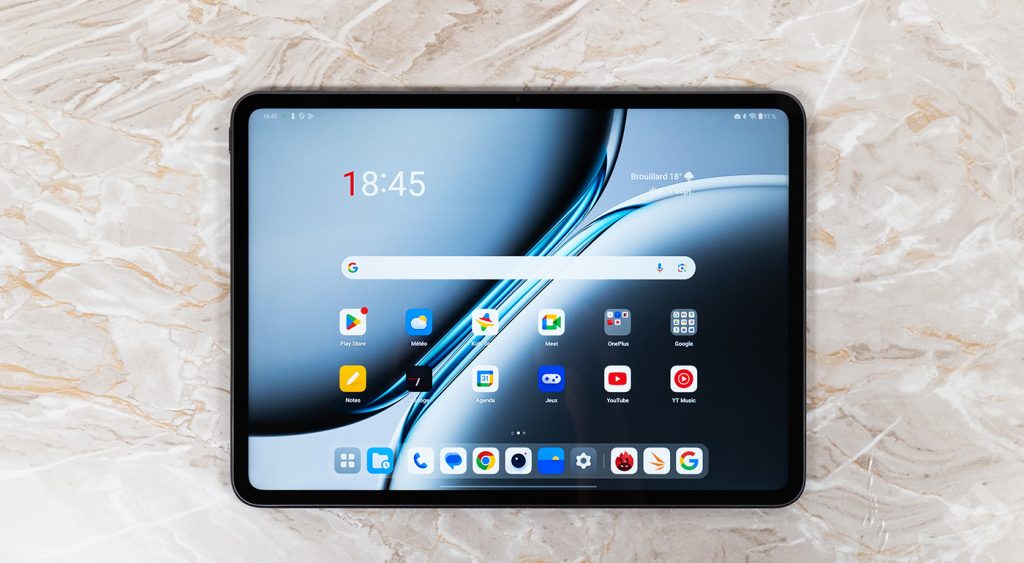
This is combined with an ultra-smooth 144 Hz refresh rate, which automatically adjusts between 30, 48, 50, 60, 90, 120 and 144 Hz depending on use, to optimize battery life. This adaptability translates into an extremely fluid experience, making all interactions more responsive.
The high refresh rate is also an asset for games, allowing up to 144 frames per second to be displayed in compatible titles. The OnePlus Pad 2 also stands out for its unconventional 7:5 aspect ratio, unlike most other tablets.
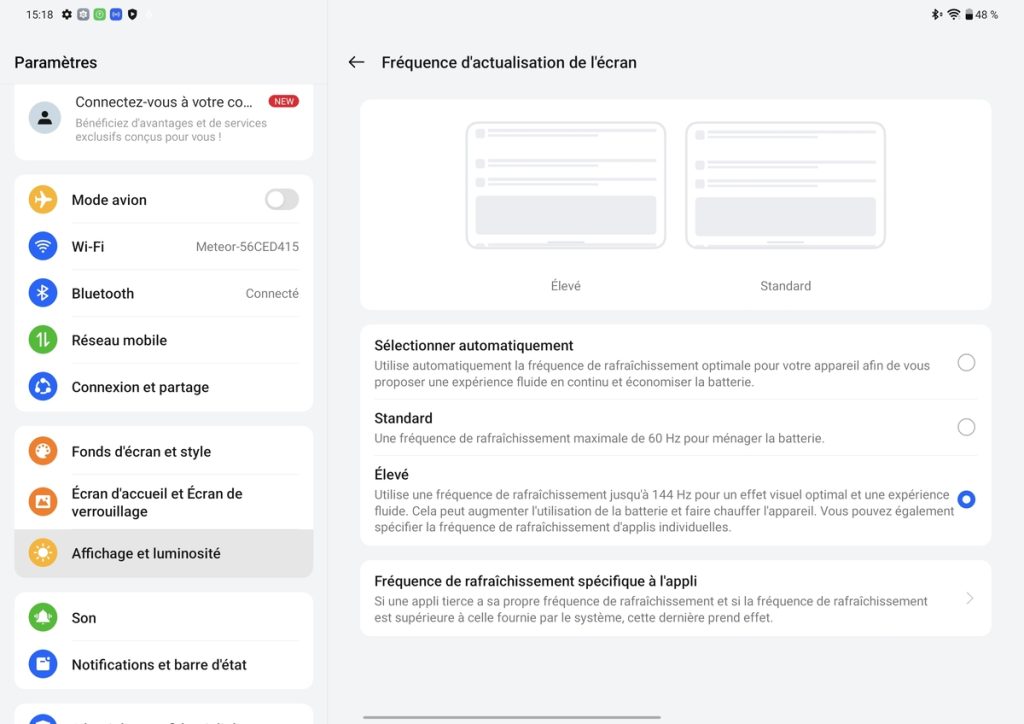
Although this can lead to wider black bars at the top and bottom of the screen when watching series or movies on Netflix, this format is particularly advantageous for split-screen multitasking.

The screen is also very bright, with a maximum brightness of 900 nits, making it easy to use even in brightly lit environments. What’s more, the OnePlus Pad 2 supports HDR10+.
The camera
Camera-wise, there’s little new to report: the OnePlus Pad 2 retains the same 8-megapixel front camera and 13-megapixel rear camera as its predecessor.
However, this isn’t really disappointing, as the tablet cameras are primarily used for video calls rather than advanced photography.

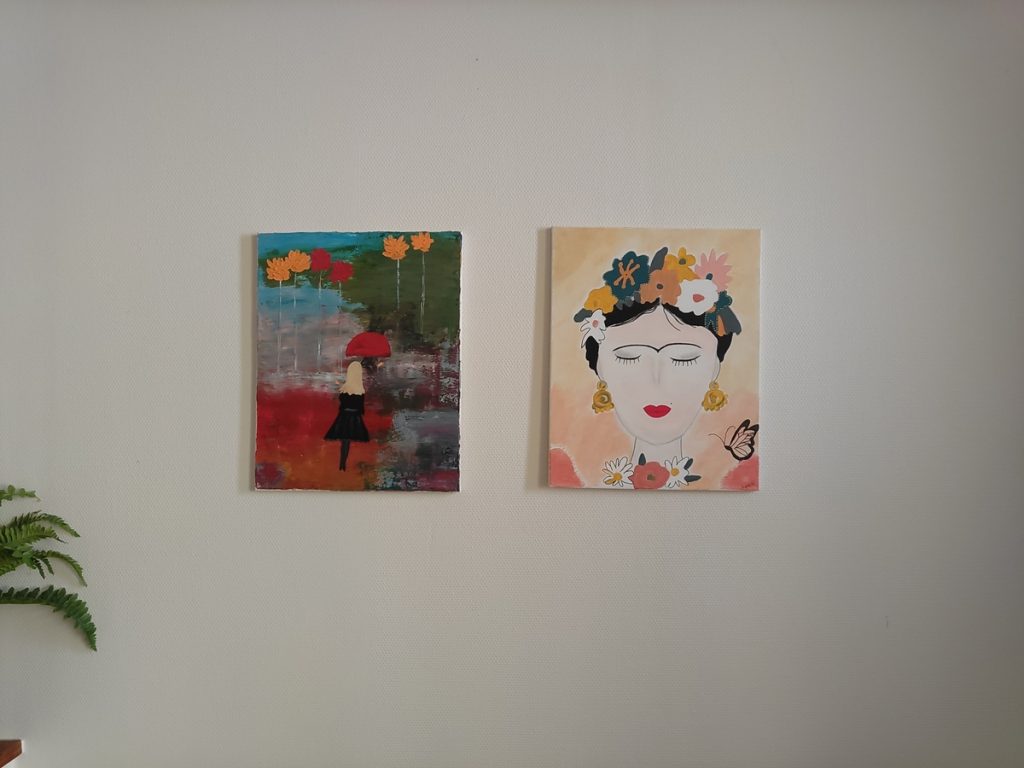

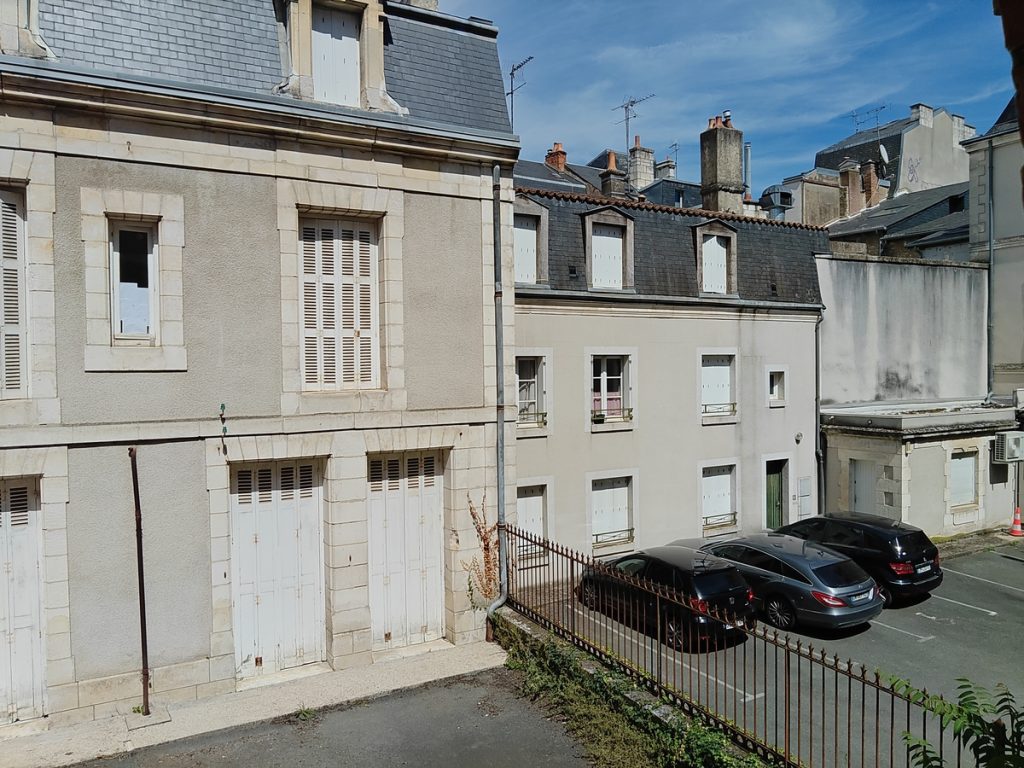
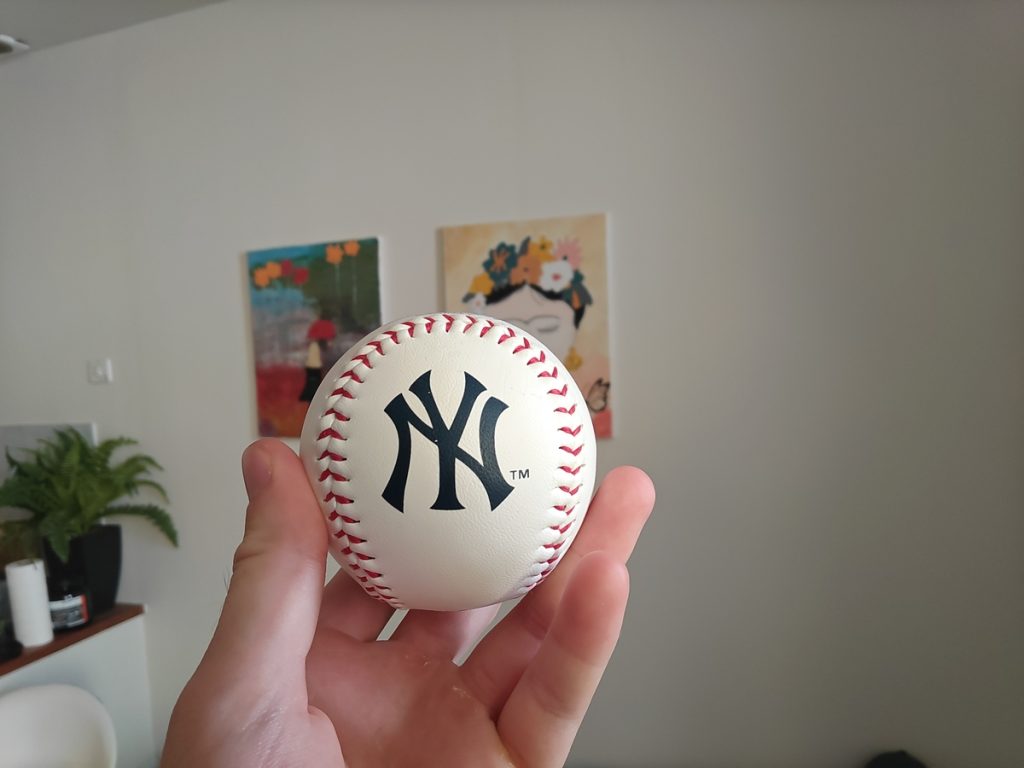


On the whole, these cameras fulfill their role well, offering sufficient performance for quick photos and video calls. The horizontal orientation of the selfie camera is particularly suitable for video conferencing.
For more serious shots, however, it’s best to rely on a smartphone or dedicated camera.
OxygenOS 14.1 interface
OxygenOS is the interface for OnePlus tablets. This Android overlay is pleasant to use, offers a fluid interface and performs very well in terms of user experience.
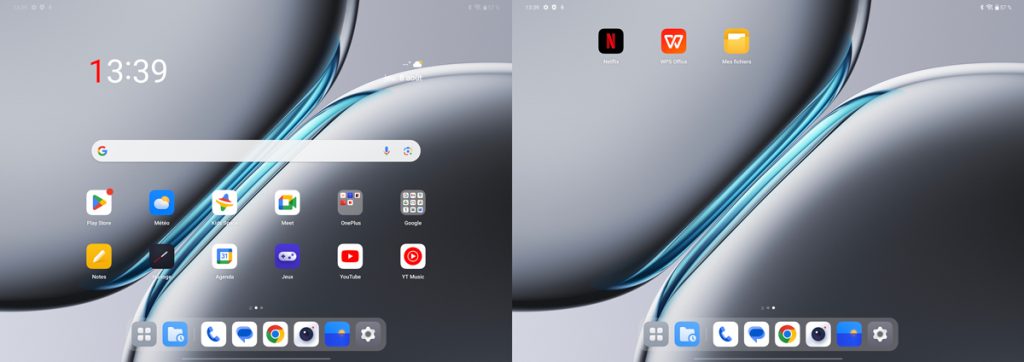
On the bottom, there’s a dock for recently used applications, as well as the ones you use most often, with access to the app drawer, a handy feature for Android aficionados.
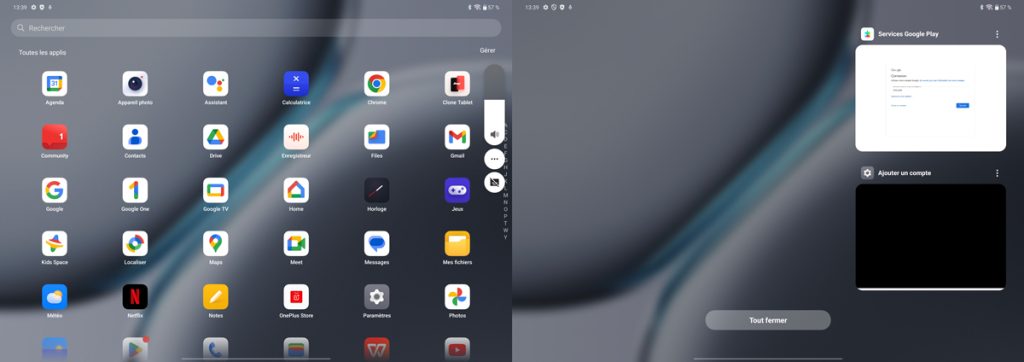
The OnePlus Pad 2 also offers multitasking, enabling you to use several applications at the same time, in multi-window mode. It’s very practical here too, as many tablets offer this, but make sure you have the external keyboard to get the most out of it.
OnePlus Pad 2 battery life
The OnePlus Pad 2 is distinguished by its 9510 mAh battery capacity, identical to that of its predecessor, the OnePlus Pad. With this capacity, the tablet offers remarkable performance in terms of autonomy. In tests, it achieved an excellent active use score of 10h51. Whether for internet calls (33 hours), web browsing (over 11 hours), video streaming (10h30) or gaming (6h30), the OnePlus Pad 2 shows solid endurance in all situations.
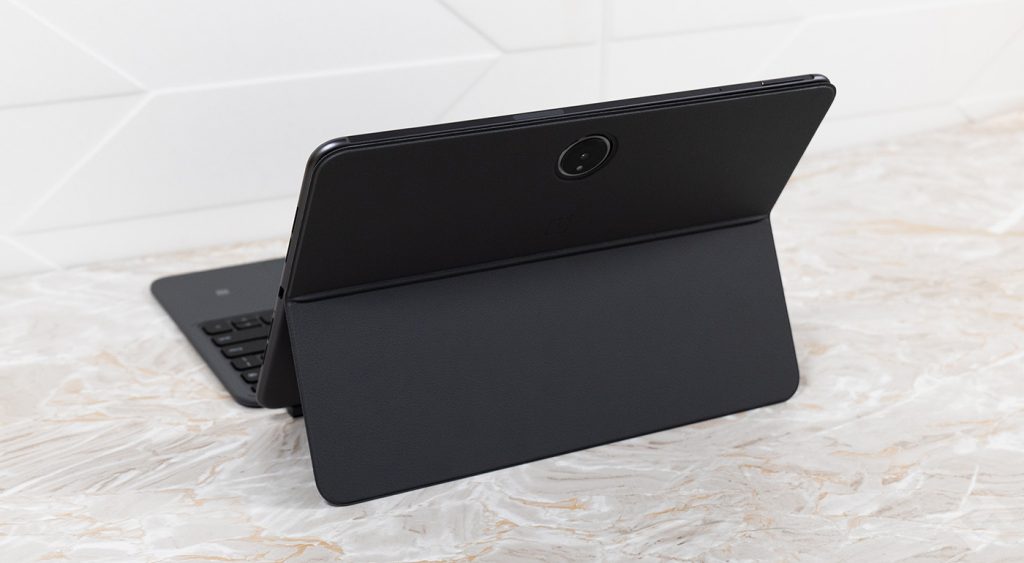
One of this tablet’s strong points is its compatibility with 67W fast charging, although it comes without a charger. Currently, if you order the tablet on the OnePlus website, a 67W charger is offered free of charge. If you already own a VOOC charger from OnePlus or Oppo, you can also use it to charge the tablet.
A 100W SuperVOOC charger was used for the charge test. Result: in just 15 minutes, the empty battery was recharged to 36%, and in 30 minutes, it reached 65%. A full charge took just 56 minutes. This is an impressive result, especially given the battery’s large size.
Sound quality
The OnePlus Pad 2 is equipped with six stereo speakers, comprising four full-range drivers and two woofers. This audio system impresses with its volume, offering powerful sound for both listening to music and watching movies.
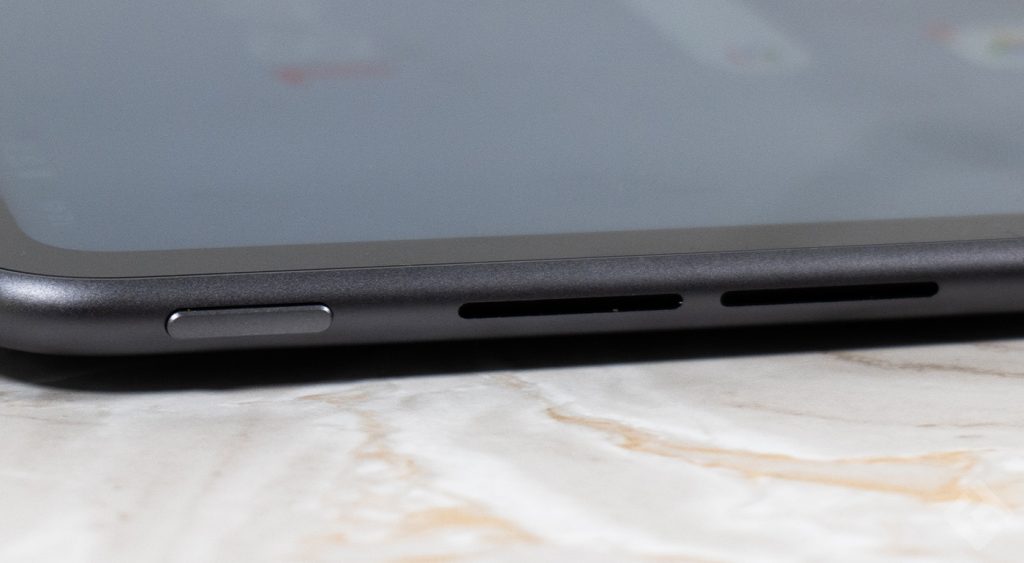
However, while the power is undeniable, the sound quality is frankly not great. While bass is present and brings a certain dynamism, and treble is well reproduced, voices lack clarity. They appear muffled, which can detract from the experience when viewing vocalized content, such as dialogues in films or podcasts.
Locking and security
Like many tablets on the market, the OnePlus Pad can be unlocked simply with a code or password, but that’s it. No fingerprint sensor here, and no facial recognition sensor either… Nothing to see, move along!
It’s a pity, because a fingerprint sensor could have been housed in the tablet’s lock/unlock button, as other manufacturers do. Likewise, as on the brand’s smartphones, we could have had a facial recognition system with the front camera, but that’s not what the manufacturer is offering on its tablet, and for 500 euros, that’s disappointing.
OnePlus Pad 2: Reviews
The OnePlus Pad 2 is not a bad tablet. It offers a very good screen and really satisfactory performance. However, on a few other points, it fails to convince. These include audio quality and the fingerprint sensor. As for the camera, it remains decent, but connectivity is good, with Wi-Fi 7 and Bluetooth 5.4, which is fully satisfactory.



